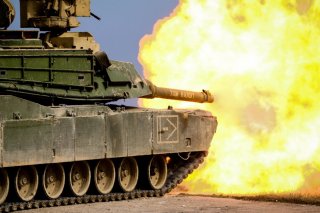The Army Has Perfected New War Tactics During Its ‘Campaign of Learning’
Project Convergence, while still considered to be a learning experiment by Army leaders, demonstrated paradigm-changing breakthroughs.
The Army will assess the results of seven “use cases” it tested in the Arizona desert during its most recent Project Convergence 2021 exercise. The overall concept for Project Convergence, which began last year, is to generate high-speed, multi-domain connectivity between various points of contact on the battlefield. This exercise aims to test the ability of air, ground, manned, unmanned and space platforms to share information with one another. Also, the exercise attempts to exponentially shorten “sensor-to-shooter” targeting time and wage war at the “speed of relevance.”
Project Convergence 2021 arguably showed breakthrough progress linking mini-forward drones to larger drones, helicopters and ground combat vehicles within seconds. The sensor-to-shooter process has historically taken as long as twenty minutes in some scenarios. But Project Convergence 2021 showed that an artificial-intelligence-capable computer system called FIRESTORM was able to gather, process and organize time-sensitive data prior to transmitting it and establishing an optimal “sensor to shooter” pairing in a matter of seconds.
Additionally, Project Convergence 2021 tested satellite connectivity by sending target data from Washington State to Yuma Proving Grounds, Arizona, at nearly unprecedented speeds. This test was conducted to see if the Army could expedite an armed attack on a mock enemy target. For example, a forward-operating, air-launched mini-drone was able to find an enemy ground target and relay the key information about it to a larger drone that, in concert with a helicopter, sent the data to a ground-based computer system capable of instantaneously processing and organizing the information. FIRESTORM was able to process otherwise large amounts of data, organize it and determine which weapon should be used to destroy the target. That data was then sent to a ground combat vehicle. Thus, Project Convergence, while still considered to be a learning experiment by Army leaders, demonstrated paradigm-changing breakthroughs.
The speed of decisionmaking is determined by a military’s ability to quickly gather, organize, process and perform analytics on data and identify key moments of relevance otherwise buried beneath seemingly limitless volumes of data.
This year’s Project Convergence aimed to expand the bounds of connectivity across multiple domains. During the exercise. The Army tested over one hundred technologies across twenty sites with over five thousand participants.
“Project Convergence is our in-the-dirt experimentation to inform how the Army will fight and organize in the future . . . by linking all sensors to the best shooter through the right C2 node,” Army Chief of Staff Gen. James McConville said via an Army press statement.
Kris Osborn is the defense editor for the National Interest. Osborn previously served at the Pentagon as a Highly Qualified Expert with the Office of the Assistant Secretary of the Army—Acquisition, Logistics & Technology. Osborn has also worked as an anchor and on-air military specialist at national TV networks. He has appeared as a guest military expert on Fox News, MSNBC, The Military Channel, and The History Channel. He also has a Master’s Degree in Comparative Literature from Columbia University.
Image: Flickr / U.S. Army Futures Command

